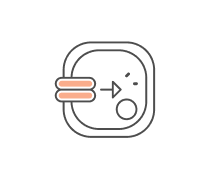Which is the healthiest ratio?
The highest rate of tissue protein turnover happens in the
Many genes occur in alternative forms called alleles.
Mitosis is responsible for embryonic development and tissue growth.
The greater the concentration gradient the faster the diffusion rate.
Which of these is hydrophobic?
Since there are no genes coding for carbohydrates, nucleic...
HDL comes from _________?
Which of these is (are) always hydrophobic?
Most protein in the body is found in ________
A patient was severely dehydrated, losing a large amount of fluid. The...
Water flows through a selectively permeable membrane in a process...
The sodium-potassium (Na+-K+) pump transports both sodium and...
Cells lining the small intestine are specialized for absorption of...
An _______________ is composed of two or more tissues types, whereas...
A red blood cell is placed in a hypertonic solution. The concentration...
Which of the following processes could occur only through the plasma...
The human genome consists of?
Most body 's fat is stored in
If one allele is not phenotypically expressed in the presence of...
High-quality _________ proteins are those that provide all the...
The stage at which chromosomes aggregate along the equator of a cell...
___________ yield about 4 kcal/g when completely oxidized,...
Fats should account for about _______ percent of the daily caloric...
_____________ does not raise total metabolic rate (TMR).
During the postabsorptive state
After translation, a protein may undergo structural changes called...
What function would immediately cease if the ribosomes of a cell were...
People on weight-loss diets often lose weight quickly at first, but...
These are all membranous organelles except
Most carbohydrates in the body are found in
Only approximately _____________% of the energy in the glucose...
This figure shows translation of mRNA. What does "A" show?
Glycolysis and aerobic respiration collectively produce up to...
Oxygen ?
_______ is a product of aerobic respiration.
Which of the following would you expect to be in a state of negative...
Shivering warms the body because it increases the rate of
___________ is secreted during the postabsorptive state.
____________ gives structural support, determines the shape of a...
Macronutrients include
Minerals are ________ , whereas vitamins are __________.
Heat exhaustion results from
During the postabsorptive state
Carbohydrates function as structural components of other molecules...
Hemophilia is caused by a sex-linked recessive allele. This means that
______ provide motility to a cell, ______ act as sensory...
The basal metabolic rate should be measured when a person
During the absorptive state
Copying genetic information from DNA into RNA is called...
_________ constitutes the so-called "bad cholesterol."
The first step in using amino acids as fuel is to _____________ them
Cytokinesis overlaps with which phase of mitosis?
During the postabsorptive state
Lipid functions include all of the following except
Incomplete fatty acid oxidation produces ____________, which might...
Oxidation of a typical fatty acid can yield
Which of these is an example of active transport?
Microvilli and cilia differ in their function but have the same...
The synthese of glucose from amino acids belongs to a metabolic...
Vitamin ...
___________________ are turned on or off by regulatory proteins in...
Transcription occurs in the _________________, but most translation...
Which of these processes occurs during a cell's first gap (G1)...
A cell finishing mitosis has ________________ DNA molecules, while a...
Proteins are associated with all these functions except
All of the following are directly involved in translation except
Transmembrane proteins that make up enzymes in the plasma membrane are...
. ______ describes the number of particles of a solute in a solution,...
________ is a product of glycolysis
Most of the NADH contributing energy to ATP synthesis is produced by
The liver performs all of the following functions except
What metabolic process produces ammonia?
Which of the following omits some stage(s) of the cell cycle?
A nude body at a room temperature of 21°C (70°F) loses most of...
Glycogenesis is stimulated by ____________, and glycogenolysis is...
After mitosis each chromosome consists of two parallel filaments...
The liver does not
What metabolic process produces ammonia?
A karyotype shows the __________________ chromosomes sorted and...
This figure shows translation of mRNA. What does "E" show?
Fatty acids are catabolized by a process called
Facilitated diffusion and active transport have in common that both
All of the body's nonreproductive cells, called ________________,...
The loss of body heat by conduction can be enhanced by
Which of the following compounds yields the most ATP per molecule?
During periods of fasting, fat is said to have a protein-sparing...
The enzyme RNA polymerase participates in translation.
The quickest physiological mechanism for achieving moderate heat...
This figure shows translation of mRNA. What does "C" show?
















